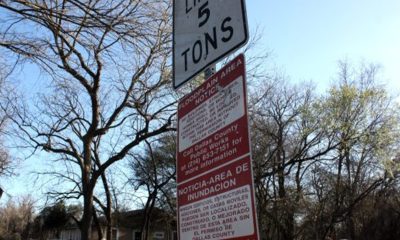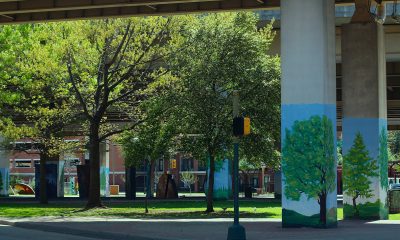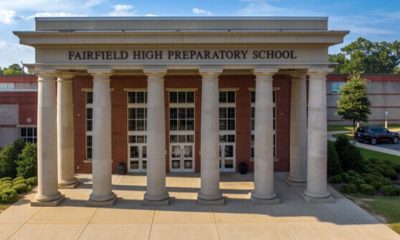#NNPA BlackPress
Photographer explores impact of redlining; BMA to host panel talk Oct. 15
BIRMINGHAM TIMES — In the 1930s, the Federal Housing Administration began to systematically deny mortgages to black, Latinx and Jewish residents. This process became known as redlining because banks and government officials drew red lines on housing maps to single out African American and Latinx neighborhoods deemed as unworthy of investment.
By Javacia Harris Bowser
In the 1930s, the Federal Housing Administration began to systematically deny mortgages to black, Latinx and Jewish residents. This process became known as redlining because banks and government officials drew red lines on housing maps to single out African American and Latinx neighborhoods deemed as unworthy of investment.
Though redlining officially ended in 1968 with the passage of the Fair Housing Act, Birmingham photographer Celestia Morgan sees traces of these policies and practices drawn all over the neighborhoods of the city she calls home.
Morgan’s exhibition REDLINE is now on display at the Birmingham Museum of Art through Feb. 16 in the Pizitz Gallery. It explores the impact that housing discrimination of the past continues to have on communities of color today.
“We are more diverse here in Birmingham than we have ever been and I’m glad to see downtown is booming,” Morgan said. “But we still have communities that are falling apart and they feel that they are being forgotten.”
The exhibition includes photographs of homes in Norwood, North Birmingham, Southtown and Ensley.
On Oct.15 at 6 p.m. the Birmingham Museum of Art will host a panel discussion on the historic, systematic practice of racial housing discrimination featured in REDLINE. Confirmed panelists include Morgan, local activists Odessa Woolfolk and T. Marie King, and attorney and community organizer Richard Rice.
Morgan, 38, who grew up in the Central Park area of Ensley, hopes her work will help shed light on a number of issues facing some of Birmingham’s predominantly black neighborhoods including gentrification and pollution.
“They pay taxes just like everybody else,” Morgan said. “Can we get assistance to them?”
Furthermore, Morgan is troubled by the vast number of title loan businesses and fast food restaurants in these communities.
“Is that what we’re offering and providing for these families?” she asked.
Hallie Ringle, the Birmingham Museum of Art’s Hugh Kaul Curator of Contemporary Art, was instrumental in bringing REDLINE to the museum.
“I’ve been wanting to work with Celestia for a while,” said Ringle, who came to the museum in 2018. “She is an incredible artist and her work is really visionary. She is from Birmingham and is making work about Birmingham and the museum has been really focused on finding topics that are important to the city as a whole.”
The Path Before Us
Part of Morgan’s exhibit focuses on Interstate 20/59. The interstate, built in the early 1970s, bisected black neighborhoods and separated them from the city center and predominantly white neighborhoods. The interstate’s placement displaced many residents in its path and caused property values to drop.
Currently, the interstate is being rebuilt at a higher elevation to ease traffic flow to and from downtown, which Ringle believes makes Morgan’s REDLINE even more timely.
“Every neighborhood in Birmingham was affected by redlining, but I think that maybe not everybody knows why 20/59 cuts through Birmingham the way it does,” Ringle said. “It was very intentionally planned to prevent access, to make property values plummet for black neighborhoods in Birmingham. So, it seemed like the right time to engage this conversation when this construction is happening right in the museum’s backyard.”
In this construction, Morgan finds a metaphor.
“It’s in the same spot. We’re repeating the same thing. We’re modernizing it a little bit, but we’re actually doing the same thing,” Morgan said. “We no longer use the map anymore, however, we’re still moving and operating in this path that has been laid out for us.”
Speaking From Within
Morgan believes she inherited her love for photography from her father, who died in 2005.
“When my father passed, we were looking for images of him and we realized that he was the guy behind the camera,” Morgan said. “He would give me one of his old cameras and I would go around and start to photograph.”
As a student in junior ROTC at Jackson-Olin High School Morgan would use a 35mm camera to take pictures at events like Birmingham’s Veteran’s Day Parade. She’d also take portraits of the kids at the day care center her mother owned for their parents.
Morgan went to college at the University of Alabama at Birmingham (UAB) to study elementary education. But after one photography elective she realized this was more than a high school hobby.
“I fell in love and I changed my major,” Morgan said. She would go on to earn a Master of Fine Arts degree at the University of Alabama in Tuscaloosa.
“The pictures that I take are me speaking from within,” Morgan said. “That is my voice. That’s how I communicate to not only my family, but to the community and to the world.”
Morgan’s work has been featured at the Ogden Museum of Southern Art in New Orleans and is a part of the permanent collection at the Crystal Bridges Museum of American Art in Arkansas, which was founded by philanthropist and arts patron Alice Walton, daughter of Helen Walton and Walmart founder Sam Walton.
When Morgan began taking photographs of Birmingham’s neighborhoods, she didn’t set out to make a political statement. It was personal.
“The first intent was not to create art about redlining,” she explained. “It was for me, exploring why my family only lived in a certain part of Birmingham. And I wanted to capture memories for my family, take pictures of houses that my grandmother lived in or my aunts and uncles lived in.”
But as Morgan saw both dignity and dilapidation in the neighborhoods she photographed, she started to think bigger.
“How can my story help somebody else?” she began to ask herself. “How can I connect it to something greater than what I am?”
The Sky Is The Limit
Morgan’s exhibit also features pieces meant to represent hope.
“As I started to dig into the history of redlining, I started to think we’re still almost living in the same pattern or system that was established a long time ago,” Morgan said. “But there’s still hope for these communities if we put our resources towards these communities instead of forgetting about them, pushing them aside or only fixing the communities that are closer to the downtown areas.”
For one part of the REDLINE series, Morgan places the outlines of Birmingham neighborhoods redlined in the 1933 Home Owners’ Loan Corporation map against photographs of blue skies.
“My mother would tell me the sky is the limit,” Morgan said, adding that her mother would also say, “You can be whatever you want to be in life.”
Morgan wants people of all neighborhoods to have this type of optimism for the future.
She wants them to look at her photographs and think, “The same sky is blue in Mountain Brook like it is in Woodlawn and that means I have the potential to do good as well. So, don’t forget about me.”
This article originally appeared in The Birmingham Times.
#NNPA BlackPress
Beloved Actor and Activist Louis Cameron Gossett Jr. Dies at 87
NNPA NEWSWIRE — Louis Gossett Jr., the groundbreaking actor whose career spanned over five decades and who became the first Black actor to win an Academy Award as Best Supporting Actor for his memorable role in “An Officer and a Gentleman,” has died. Gossett, who was born on May 27, 1936, in Brooklyn, N.Y., was 87. Recognized early on for his resilience and nearly unmatched determination, Gossett arrived in Los Angeles in 1967 after a stint on Broadway.
The post Beloved Actor and Activist Louis Cameron Gossett Jr. Dies at 87 first appeared on BlackPressUSA.
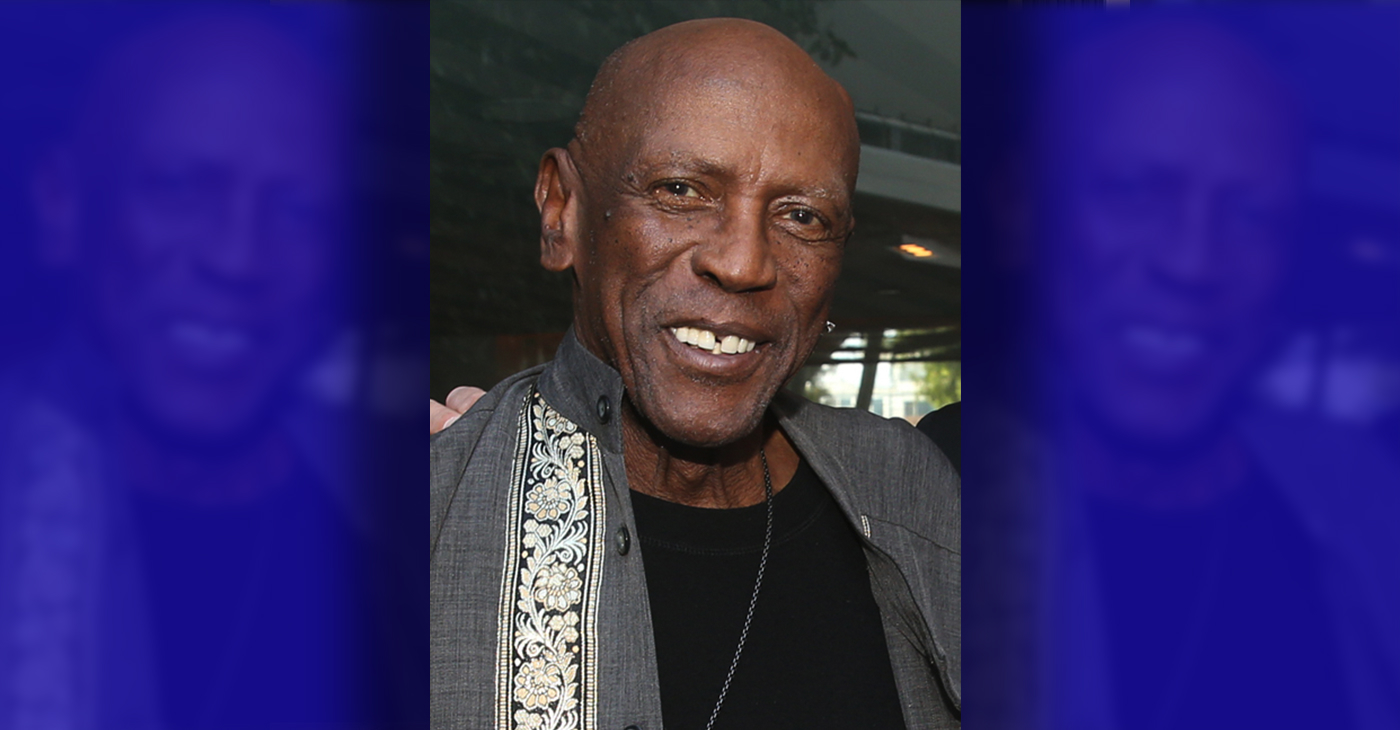
By Stacy M. Brown
NNPA Newswire Senior National Correspondent
@StacyBrownMedia
Louis Gossett Jr., the groundbreaking actor whose career spanned over five decades and who became the first Black actor to win an Academy Award as Best Supporting Actor for his memorable role in “An Officer and a Gentleman,” has died. Gossett, who was born on May 27, 1936, in Brooklyn, N.Y., was 87. Recognized early on for his resilience and nearly unmatched determination, Gossett arrived in Los Angeles in 1967 after a stint on Broadway.
He sometimes spoke of being pulled over by law enforcement en route to Beverly Hills, once being handcuffed to a tree, which he remembered as a jarring introduction to the racial tensions of Hollywood. In his memoir “An Actor and a Gentleman,” Gossett recounted the ordeal, noting the challenges faced by Black artists in the industry. Despite the hurdles, Gossett’s talent shone brightly, earning him acclaim in groundbreaking productions such as “A Raisin in the Sun” alongside Sidney Poitier. His Emmy-winning portrayal of Fiddler in “Roots” solidified his status as a trailblazer, navigating a landscape fraught with racial prejudice.
According to the HistoryMakers, which interviewed him in 2005, Gossett’s journey into the limelight began during his formative years at PS 135 and Mark Twain Junior High School, where he demonstrated early leadership as the student body president. His passion for the arts blossomed when he starred in a “You Can’t Take It With You” production at Abraham Lincoln High School, catching the attention of talent scouts who propelled him onto Broadway’s stage in “Take A Giant Step.” His stellar performance earned him the prestigious Donaldson Award for Best Newcomer to Theatre in 1952. Though initially drawn to sports, Gossett’s towering 6’4” frame and athletic prowess led him to receive a basketball scholarship at New York University. Despite being drafted by the New York Knicks in 1958, Gossett pursued his love for acting, honing his craft at The Actors Studio under the tutelage of luminaries like John Sticks and Peggy Fury.
In 1961, Gossett’s talent caught the eye of Broadway directors, leading to roles in acclaimed productions such as “Raisin in the Sun” and “The Blacks,” alongside legends like James Earl Jones, Cicely Tyson, Roscoe Lee Brown, and Maya Angelou. Transitioning seamlessly to television, Gossett graced small screens with appearances in notable shows like “The Bush Baby” and “Companions in Nightmare.” Gossett’s silver screen breakthrough came with his role in “The Landlord,” paving the way for a prolific filmography that spanned over 50 movies and hundreds of television shows. From “Skin Game” to “Lackawanna Blues,” Gossett captivated audiences with his commanding presence and versatile performances.
However, his portrayal of “Fiddler” in Alex Haley’s groundbreaking miniseries “Roots” earned Gossett critical acclaim, including an Emmy Award. The HistoryMakers noted that his golden touch extended to the big screen, where his role as Sergeant Emil Foley in “An Officer and a Gentleman” earned him an Academy Award for Best Supporting Actor, making him a trailblazer in Hollywood history.
Beyond the glitz and glamour of Hollywood, Gossett was deeply committed to community activism. In 1964, he co-founded a theater group for troubled youth alongside James Earl Jones and Paul Sorvino, setting the stage for his lifelong dedication to mentoring and inspiring the next generation. Gossett’s tireless advocacy for racial equality culminated in the establishment of Eracism, a nonprofit organization dedicated to combating racism both domestically and abroad. Throughout his illustrious career, Gossett remained a beacon of strength and resilience, using his platform to uplift marginalized voices and champion social change. Gossett is survived by his children, Satie and Sharron.
The post Beloved Actor and Activist Louis Cameron Gossett Jr. Dies at 87 first appeared on BlackPressUSA.
#NNPA BlackPress
COMMENTARY: D.C. Crime Bill Fails to Address Root Causes of Violence and Incarceration
WASHINGTON INFORMER — The D.C. crime bill and so many others like it are reminiscent of the ‘94 crime bill, which produced new and harsher criminal sentences, helped deploy thousands of police and surveilling methods in Black and brown communities, and incentivized more states to build prisons through a massive infusion of federal funding. While it is not at the root of mass incarceration, it significantly accelerated it, forcing a generation of Black and brown families into a never-ending cycle of state-sanctioned violence and incarceration.
The post COMMENTARY: D.C. Crime Bill Fails to Address Root Causes of Violence and Incarceration first appeared on BlackPressUSA.
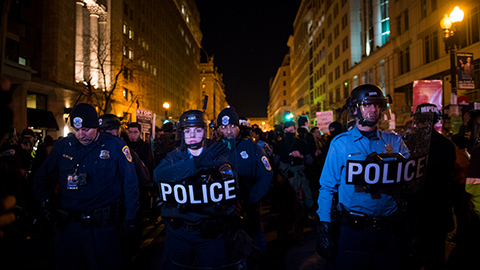
By Kaili Moss and Jillian Burford | Washington Informer
Mayor Bowser has signed the “Secure DC” omnibus bill passed by the D.C. Council last month. But we already know that this bill will be disastrous for all of D.C., especially for Black and brown residents.
While proponents claim that this legislation “will make D.C. residents safer and more secure,” it actually does nothing to address the root of the harm in the first place and instead maintains a cycle of violence, poverty, and broken community ties. The omnibus bill calls for increased surveillance, drug-free zones, and will expand pre-trial detention that will incarcerate people at a significantly higher rate and for an indeterminate amount of time before they are even tried. This bill will roll back decades of nationwide policy reform efforts and initiatives to keep our communities safe and whole, which is completely contradictory to what the “Secure” D.C. bill claims it will do.
What is unfolding in Washington, D.C., is part of a dangerous national trend. We have seen a resurrection of bad crime bills in several jurisdictions across the country — a phenomenon policy experts have named “zombie laws,” which are ineffective, costly, dangerous for communities of color and, most importantly, will not create public safety. Throwing more money into policing while failing to fund preventative measures does not keep us safe.
The D.C. crime bill and so many others like it are reminiscent of the ‘94 crime bill, which produced new and harsher criminal sentences, helped deploy thousands of police and surveilling methods in Black and brown communities, and incentivized more states to build prisons through a massive infusion of federal funding. While it is not at the root of mass incarceration, it significantly accelerated it, forcing a generation of Black and brown families into a never-ending cycle of state-sanctioned violence and incarceration. Thirty years later, despite spending billions each year to enforce these policies with many of these provisions remaining in effect, it has done very little to create long-term preventative solutions. Instead, it placed a permanent moving target on the backs of Black people, and the D.C. crime bill will do the same.
The bill calls for more pretrial detention. When our loved ones are held on pretrial detention, they are held on the presumption of guilt for an indeterminate amount of time before ever seeing a judge, which can destabilize people and their families. According to experts at the Malcolm Weimer Center for Social Policy at Harvard University, just one day in jail can have “devastating consequences.” On any given day, approximately 750,000 people are held in jails across the nation — a number that beats our nation’s capital population by about 100,000. Once detained, people run the risk of losing wages, jobs, housing, mental and health treatments, and time with their families. Studies show that pretrial detention of even a couple of days makes it more likely for that person to be rearrested.
The bill also endangers people by continuing a misguided and dangerous War on Drugs, which will not get drugs off the street, nor will it deter drug use and subsequent substance use disorders (SUDs). Drug policies are a matter of public health and should be treated as such. Many states such as Alabama, Iowa and Wisconsin are treating the current fentanyl crisis as “Crack 2.0,” reintroducing a litany of failed policies that have sent millions to jails and prisons instead of prioritizing harm reduction. Instead, we propose a simple solution: listen to members of the affected communities. Through the Decrim Poverty D.C. Coalition, community members, policy experts and other stakeholders formed a campaign to decriminalize drugs and propose comprehensive legislation to do so.
While there are many concerning provisions within the omnibus bill, car chases pose a direct physical threat to our community members. In July 2023, NBC4 reported that the D.C. Council approved emergency legislation that gave MPD officers the ability to engage in vehicular pursuits with so-called “limited circumstances.” Sgt. Val Barnes, the head of MPD’s carjacking task force, even expressed concern months before the decision, saying, “The department has a pretty strict no-chase policy, and obviously for an urban setting and a major metropolitan city, that’s understandable.” If our law enforcement officers themselves are operating with more concern than our elected officials, what does it say about the omnibus bill’s purported intention to keep us safe?
And what does it mean when the risk of bodily harm is posed by the pursuit itself? On Saturday, Feb. 10, an Eckington resident had a near-miss as a stolen car barreled towards her and her dog on the sidewalk with an MPD officer in pursuit. What responsibility does the city hold if this bystander was hit? What does restitution look like? Why are our elected officials pushing for MPD officers to contradict their own policies?
Just a few summers ago during the uprisings of 2020, we saw a shift in public perspectives on policing and led to legislation aimed at limiting police power after the highly-publicized murders of loved ones Breonna Taylor and George Floyd — both victims of War on Drugs policing and the powers gained from the ’94 crime bill. And yet here we are. These measures do not keep us safe and further endanger the health of our communities. Studies show that communities that focus on harm reduction and improving material conditions have a greater impact on public safety and community health. What’s missing in mainstream conversations about violent crime is the violence that stems from state institutions and structures that perpetuate racial and class inequality. The people of D.C. deserve to feel safe, and that includes feeling safe from the harms enacted by the police.
Kaili Moss is a staff attorney at Advancement Project, a national racial justice and legal organization, and Jillian Burford is a policy organizer at Harriet’s Wildest Dreams.
The post COMMENTARY: D.C. Crime Bill Fails to Address Root Causes of Violence and Incarceration first appeared on BlackPressUSA.
#NNPA BlackPress
Mayor, City Council President React to May 31 Closing of Birmingham-Southern College
THE BIRMINGHAM TIMES — “This is a tragic day for the college, our students, our employees, and our alumni, and an outcome so many have worked tirelessly to prevent,” Rev. Keith Thompson, chairman of the BSC Board of Trustees said in an announcement to alumni. “We understand the devastating impact this has on each of you, and we will now direct our efforts toward ensuring the smoothest possible transition for everyone involved.”
The post Mayor, City Council President React to May 31 Closing of Birmingham-Southern College first appeared on BlackPressUSA.

By Barnett Wright | The Birmingham Times
Birmingham-Southern College will close on May 31, after more than a century as one of the city’s most respected institutions.
“This is a tragic day for the college, our students, our employees, and our alumni, and an outcome so many have worked tirelessly to prevent,” Rev. Keith Thompson, chairman of the BSC Board of Trustees said in an announcement to alumni. “We understand the devastating impact this has on each of you, and we will now direct our efforts toward ensuring the smoothest possible transition for everyone involved.”
There are approximately 700 students enrolled at BSC this semester.
“Word of the decision to close Birmingham Southern College is disappointing and heartbreaking to all of us who recognize it as a stalwart of our community,” Birmingham Mayor Randall Woodfin said in a statement. “I’ve stood alongside members of our City Council to protect this institution and its proud legacy of shaping leaders. It’s frustrating that those values were not shared by lawmakers in Montgomery.”
Birmingham City Council President Darrell O’Quinn said news of the closing was “devastating” on multiple levels.
“This is devastating for the students, faculty members, families and everyone affiliated with this historic institution of higher learning,” he said. “It’s also profoundly distressing for the surrounding community, who will now be living in close proximity to an empty college campus. As we’ve seen with other institutions that have shuttered their doors, we will be entering a difficult chapter following this unfortunate development … We’re approaching this with resilience and a sense of hope that something positive can eventually come from this troubling chapter.”
The school first started as the merger of Southern University and Birmingham College in 1918.
The announcement comes over a year after BSC officials admitted the institution was $38 million in debt. Looking to the Alabama Legislature for help, BSC did not receive any assistance.
This past legislative session, Sen. Jabo Waggoner sponsored a bill to extend a loan to BSC. However, the bill subsequently died on the floor.
Notable BSC alumni include former New York Times editor-in-chief Howell Raines, former U.S. Sen. Howell Heflin and former Alabama Supreme Court Chief Justice Perry O. Hooper Sr.
This story will be updated.
The post Mayor, City Council President React to May 31 Closing of Birmingham-Southern College first appeared on BlackPressUSA.
-

 Activism4 weeks ago
Activism4 weeks agoOakland Post: Week of March 27 – April 2, 2024
-

 #NNPA BlackPress4 weeks ago
#NNPA BlackPress4 weeks agoFrom Raids to Revelations: The Dark Turn in Sean ‘Diddy’ Combs’ Saga
-

 #NNPA BlackPress4 weeks ago
#NNPA BlackPress4 weeks agoCOMMENTARY: D.C. Crime Bill Fails to Address Root Causes of Violence and Incarceration
-

 #NNPA BlackPress4 weeks ago
#NNPA BlackPress4 weeks agoCOMMENTARY: Lady Day and The Lights!
-

 #NNPA BlackPress4 weeks ago
#NNPA BlackPress4 weeks agoMayor, City Council President React to May 31 Closing of Birmingham-Southern College
-

 #NNPA BlackPress4 weeks ago
#NNPA BlackPress4 weeks agoBaltimore Key Bridge Catastrophe: A City’s Heartbreak and a Nation’s Alarm
-

 #NNPA BlackPress4 weeks ago
#NNPA BlackPress4 weeks agoBaltimore’s Key Bridge Struck by Ship, Collapses into Water
-

 #NNPA BlackPress4 weeks ago
#NNPA BlackPress4 weeks agoBeloved Actor and Activist Louis Cameron Gossett Jr. Dies at 87

